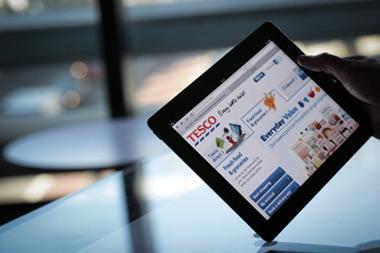M&S puts brand value at the heart of its affinity deal with Junction
Marks & Spencer is one of the UK’s most iconic brands and operates a substantial financial services operation. Head of customer proposition Paul Stokes says that although the organisation decided not to be an underwriter, it still made considerable investment in an expert team of staff who can speak to the insurance market in its own language.
M&S has a long-term partnership with Junction, which operates its motor panel, and direct relationships with AXA and RSA on travel and pet insurance respectively. Partnership has been key to the operation’s success, says Stokes. This means a lot more than simply paying lip service to brand values - for example, Junction staff work in an M&S branded call centre and receive M&S customer services training.
Stokes says M&S looks for a partner that will not only deliver on its brand values, but add value to them through their own expertise. Customer service must always come first. “While it’s not a joint venture in the structural sense, our functional teams spend a lot of time together - it has to be a sustainable relationship that creates long-term value for both parties.”
Stokes stresses the expertise of his in-house team – which he says leads to productive working relationships: “We have more adult-to-adult conversations than brokers may have with other clients,” he says.
What clients are looking for
- Customer service Given that affinity partners are trading on the strength of their brands, customer service is the number one priority. Affinity clients will look for partners that understand their approach to customer service and are willing to form deep relationships, for example through joint training programmes for staff. Unlike some other insurance clients, customer service always comes before commercial considerations for major affinity brands.
- Footprint Affinity clients need insurance arrangements that match their own customer footprint. For example, if any affinity brand had numerous young male clients, they would need to ensure that these clients were being affordably catered for by a motor insurance affinity partner. For this reason, panel arrangements administered by brokers are often the most suitable.
- Rewards Affinity partners, particularly retail partners, will be looking for added-value options from their insurance arrangements that tie customers back into the main brand. This increasingly means reward points and other links with ‘membership’ schemes.
- Alignment Affinity clients are looking for brokers and insurers that understand their requirements and share the same aims. As affinity partnerships seldom last less than five years, and often as many as 10, this is more important than cash in the short term. Indeed, affinity partnerships often lose money in the first couple of years because of the scale of investment required.
- Security In an age of scandals about cyber security and the loss of confidential information, security is of increasing importance to affinity clients. They will want to ensure their insurance partner is adequately protecting their data, and that of their customers.
- Internal competition Affinity clients are looking for the best ‘bang for their buck’ and encourage internal competition. If they are giving up precious counter space to an insurance product, they want to make sure it offers a better return than, say, a Mars bar or other core offering.
- Reactive Affinity clients must be reactive to the needs of their customers, and this can mean rapid change in approach and proposition. They look for an insurance partner that is able to meet this pace - a big challenge for some traditional market operators.
- Mobile technology Increasingly, affinity clients are demanding a range of contact options for their customers. Even those that are not particularly technologically advanced themselves are now looking for mobile and internet contact options.
- Marketing Marketing is a key area where affinity clients and their insurance partners need to work seamlessly together. Clients will usually expect monthly meetings between their own marketing teams and those of their insurance partners, as well as shared targets and ongoing joint working.






































No comments yet